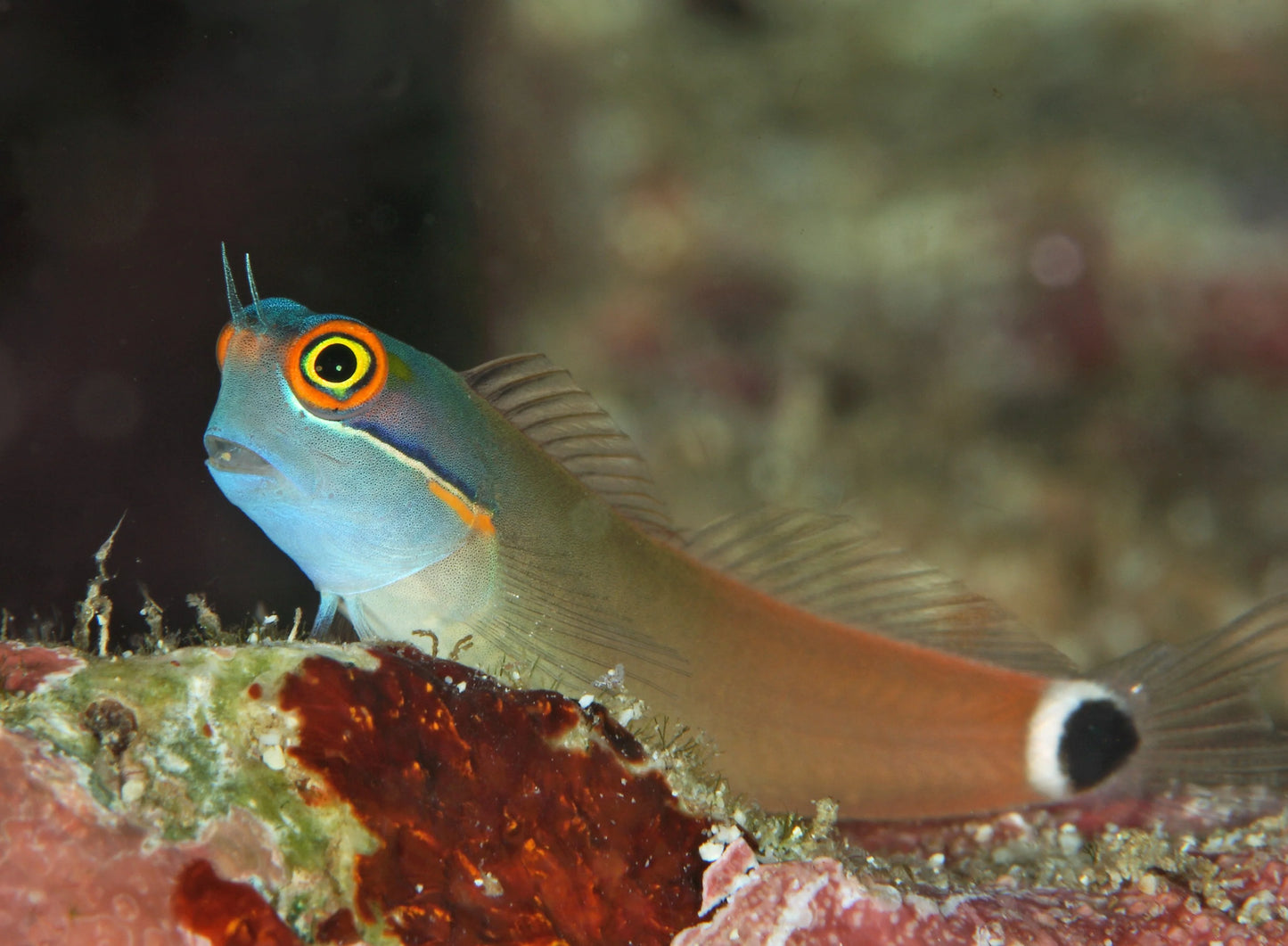Blenny - Tailspot (Ecsenius melarchus) "Rare"
Blenny - Tailspot (Ecsenius melarchus) "Rare"
Looking for a fun addition to your reef, or even a species that you can center a nano aquarium around? We’re delighted to introduce you to the tailspot blenny! This colorful, perpetually confused-looking bottom dweller might be the perfect species for your fish marine tank.
Keep reading for everything you need to know about tailspot blenny care.
| Name (Common, Scientific) | Tailspot blenny, Ecsenius stigmatura |
| Mini tank size | 15 gallons |
| Minimum group size | 1 |
| Temperature | 75-82 °F |
| Salinity | 1.020-1.025 |
| pH | 8.1-8.4 |
| Difficulty level | Easy |
Tailspot blenny (Ecsenius stigmatura) description
The tailspot blenny is not a large species and maxes out at around 2.5” in length, making it one of the smallest blennies out there. It naturally inhabits reefs in the Indo-Pacific and can easily be recognized from its eye-catching coloration: a blue to orange gradient over the entire body, a double horizontal stripe on the face and of course a black tail spot.
Frog-like eyes and two whiskers that almost resemble antennae conclude the tailspot blenny’s comical appearance.
Tailspot blenny (Ecsenius stigmatura) aquarium
These fish are not too fussy about their aquarium and what it looks like. They make a good choice for a nano reef, although there is some discussion on how small you can go. Some sources list 8 gallons, others 10, while yet others prefer 30. We’ve settled on around 15 gallons as being the minimum for us, provided it’s a horizontal tank that offers plenty of bottom space. Bigger is still better, though.
Like many other reef species, tailspot blennies will appreciate an aquarium with plenty of live rock and other décor. They love having access to nooks and crannies to hide in and, as bottom dwellers, will also appreciate a sandy substrate. They also appear to prefer a relatively low water flow level.
As for water quality, this is a relatively hardy species, but as with all fish your aquarium has to be fully cycled before you introduce it. Keep water values stable with regular maintenance.
Share




